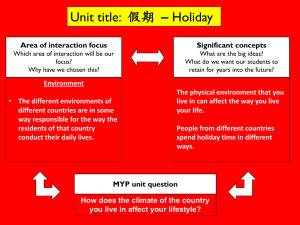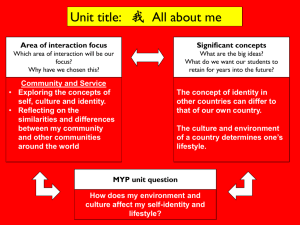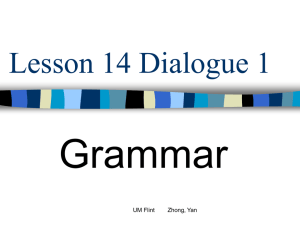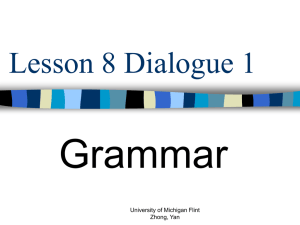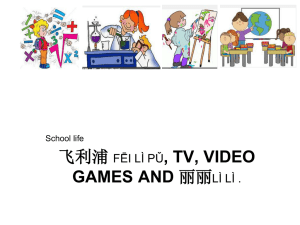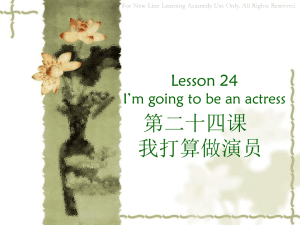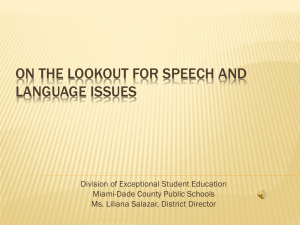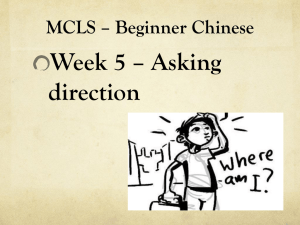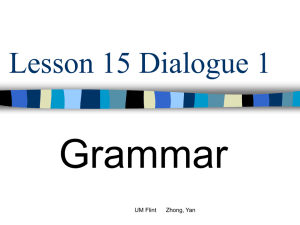Academic Year 2014-2015 Department of Visual Arts / School of
advertisement
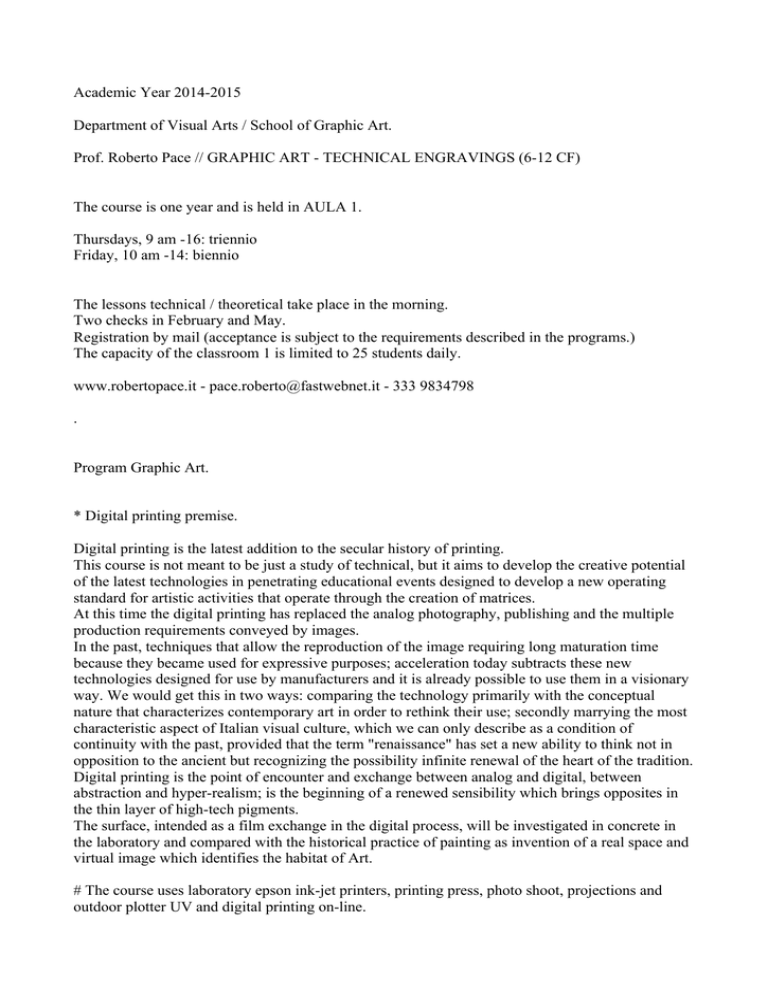
Academic Year 2014-2015 Department of Visual Arts / School of Graphic Art. Prof. Roberto Pace // GRAPHIC ART - TECHNICAL ENGRAVINGS (6-12 CF) The course is one year and is held in AULA 1. Thursdays, 9 am -16: triennio Friday, 10 am -14: biennio The lessons technical / theoretical take place in the morning. Two checks in February and May. Registration by mail (acceptance is subject to the requirements described in the programs.) The capacity of the classroom 1 is limited to 25 students daily. www.robertopace.it - pace.roberto@fastwebnet.it - 333 9834798 . Program Graphic Art. * Digital printing premise. Digital printing is the latest addition to the secular history of printing. This course is not meant to be just a study of technical, but it aims to develop the creative potential of the latest technologies in penetrating educational events designed to develop a new operating standard for artistic activities that operate through the creation of matrices. At this time the digital printing has replaced the analog photography, publishing and the multiple production requirements conveyed by images. In the past, techniques that allow the reproduction of the image requiring long maturation time because they became used for expressive purposes; acceleration today subtracts these new technologies designed for use by manufacturers and it is already possible to use them in a visionary way. We would get this in two ways: comparing the technology primarily with the conceptual nature that characterizes contemporary art in order to rethink their use; secondly marrying the most characteristic aspect of Italian visual culture, which we can only describe as a condition of continuity with the past, provided that the term "renaissance" has set a new ability to think not in opposition to the ancient but recognizing the possibility infinite renewal of the heart of the tradition. Digital printing is the point of encounter and exchange between analog and digital, between abstraction and hyper-realism; is the beginning of a renewed sensibility which brings opposites in the thin layer of high-tech pigments. The surface, intended as a film exchange in the digital process, will be investigated in concrete in the laboratory and compared with the historical practice of painting as invention of a real space and virtual image which identifies the habitat of Art. # The course uses laboratory epson ink-jet printers, printing press, photo shoot, projections and outdoor plotter UV and digital printing on-line. He is admitted to the course only if you have a laptop, internet connection and email active. The admission, given the limited capacity of the laboratory, takes into account the date of dispatch of the request for registration and requirements for the period; requirements, motivations and technical curriculum for the biennium. ________________________________________________________________________________ triennio (* digital printing) In this course, the artistic expression through the creation of matrices for prints is based on the relationship that we have between the analog and virtual, that is, between manual and use of current digital technologies. In the three years this will be a constant exchange of teaching founded on the study of those artists (chosen as an avatar) that have most transformed sensitivity, techniques, and the very idea of creativity within the broad concept of the matrix. As the course of the address that develops during the three years our aims to give every student a skill not only technical but mainly methodological prepare him to have a creative pace with the times, capable of renewing itself continuously. The basic idea is to treat the laboratory work as a stimulus to new thought processes. In the course outlined in the curriculum of the School of Graphic Art, every student has the opportunity in the three years to practice and learn, in an extensive way, every single technique with different teachers, while in our course of address means give an overview of the graphic thought in the artistic, cultural tools and refine style, blending theory with practice, always looking for something new, images and content is not granted, the themes that develop the best data and to allow each student to develop his own vision. Today it is necessary to study to learn a trade, but to be ready to acquire it later. The Academy today, in my thinking, no longer, as in the past, the goal of providing artists the basics craft, but rather, while always focusing on doing, does not teach more style and technique related to it (approach traditional), but rather seeks to develop a mind and a manual structurally experimental (modernist approach). Only the example of contemporary art, that formed independently by the artists, provides the ability to develop a creative elastic that it can redraw itself with the speed that characterizes the culture of images today, maintaining a range of expression that allows, even when he has to answer the demands of clients, to address the efficacy of a training-free blueprints. 1st year / B & N 2nd year / COLOR 3rd year / PHOTOGRAPHY ________________________________________________________________________________ ______ biennio (* digital printing) 1st year / self portrait - poster + seminars 2nd year / exhibition - catalog - + seminars The dematerialization of the work / dematerialisation of the content. Since it was built the first matrix and the consequent multiplication of the image, moved the interest on the spread rather than the uniqueness of the work. The most important contemporary artists have developed this background graphics in a surprising way. We will denote so as manual artistic work less tied to the work itself, but turned to a "materiality" that no longer coincides with the matter, the technique and the invoice but with the "movement" that the creation of the work, in form "potential" of the matrix and its expansion printed triggers in sensitivity and in our mind and the public. In the laboratory, the entire execution process will be redesigned according to this hypothesis of sense, imagining, planning and verifying its effect in practice in the prints: 1st year: self-portrait - manifesto; 2nd year show - catalog. Digital printing and computer, so disconnected from the manual, shift the focus on visual content that become thought and feed the sensitivity, giving a body to perception. The digital will be used as a virtual environment and thus without form "concrete" without "matter" as neutral place, to deepen and focus on a new imaginary. The seminars will focus on watching movies and videos taken such as the origin of the new way of thinking about contemporary images. 学年2014-2015 版画视觉艺术/学系。 罗伯特·佩斯教授//图形艺术 -技术雕饰(6-12CF) 本课程为一年,1号展馆举行。 星期四,上午9点-16:三年 周五,上午10点-14:二年 该课程的技术/理论发生在早晨。 两项检查在2月和5。 注册通过邮件(验收须在方案中描述的要求。) 教室1的容量被限制为25名学生的日常。 www.robertopace.it-pace.roberto@fastwebnet.it-3339834798 。 计划平面艺术。 *数码印刷的前提。 数码印刷是最新加入到印刷的世俗历史。 这当然并不意味着是技术只是一个研究,但它的目的是发展渗透到设计开发,通过建立矩阵的操作艺术活动的新作业标准教育活动的最新技术的创造潜力。 此时的数字印刷已经取代了模拟摄影,出版和由图像传送的多个生产要求。 在过去,技术,允许图像需要很长熟化时间,因为它们成为用于表达目的的再现;今天的加速厂商减去这些专为使用新技术,它已经可以使用他们在一个富有远见的方式。我们会得到这个方式有两种:技术比较主要的 概念性质特点的当代艺术,以重新考虑他们的使用;其次嫁给意大利视觉文化,我们只能形容为与过去的连续性条件的最具特色的方面,提供的是,“复兴”已经设置为不认为在反对古新的能力,但承认可能传统的心 脏的无限延续。 数码印刷是遭遇以及模拟和数字之间的交流点,抽象和超现实主义之间;是重新感性的对立带来的薄层高科技颜料的开始。 从表面上看,意在数字化过程中电影交流,将混凝土在实验室进行调查,并与绘画的历史实践的现实空间的发明和虚拟形象标识艺术的栖息地进行比较。 #本课程采用实验室EPSON喷墨打印机,印刷机,照片拍摄,预测和户外紫外线绘图仪和在线数字印刷。 他只承认,如果你有一台笔记本电脑,网络连接和电子邮件活动的过程。 在入院时,考虑到实验室的能力有限,考虑到报名和要求的期限请求派遣的日期;需求,动机和技术课程的经费。 三年(*数码印刷) 在这个过程中,通过建立矩阵的版画的艺术表现是基于我们有模拟和虚拟之间,也就是手动和利用现有的数字技术之间的关系。在这三年将是一个固定汇率的教学建立在这些艺术家(选作头像)已大部分转化的敏感 性,技术的研究,创造性的矩阵的广义概念中的想法。因为这三年的发展过程中我们的目的是让每一个学生一门技能,不仅技术更主要的方法准备他有一个创意时代的步伐,能够不断地更新自己的地址的过程。其基 本思想是将实验室工作作为一项刺激新的思维过程。在图形艺术学院的课程介绍的过程中,每一个学生在三年的实践机会和学习,在广泛的方式,每一个不同的教师单一的技术,而在我们的报告方式当然给图形思维 的概述,在艺术,文化的工具和完善的风格,融合了理论联系实际,一直在寻找新的东西,图像和内容不批,即制定最佳的数据主题,并让每个学生发展自己的愿景。 今天,有必要研究学一门手艺,但要准备好以后获取它。 今天的学院,在我的思想,不再像过去一样,让艺术家的基本工艺为目标,而是同时始终专注于做什么,不教更多的风格和技巧有关,它(的做法传统的),而是旨在建立一个心灵和手动结构实验(现代方法)。当 代艺术,独立的艺术家们组成,只有例如提供开发创新的弹性,它可以重绘本身所特有的图像文化的速度能力的今天,维护了一系列表现,让即使他有回答客户的需求,解决训练无蓝图的功效。 1第1年/B&N 2年/COLOR 3年/摄影 ______________________________________________________________________________________ 期(*数码印刷) 第一年/自 -海报+讲座 2年/展览目录 -+讲座 内容的工作/非实物化的非物质化。 因为它是建立在第一矩阵和所述图像的随后的乘法,提出了扩展的兴趣,而不是工作的唯一性。最重要的当代艺术家已经开发出这样的背景图形在一个令人惊讶的方式。 我们将表示这样手工艺术作品较少依赖于工作本身,而是转向了“实质性”不再与这件事同时发生,技术和发票,但与“运动”的创建工作,在形成“势”矩阵及其在灵敏度和在我们的脑海和公众的扩展印刷触发器 。 在实验室中,在整个执行过程中会根据感,想象,规划和验证在打印实践的作用这一假设进行重新设计: 第一年:自画像 -宣言;第二年展 -目录。 数字印刷和计算机,从手动断开如此,却将重点放在视觉内容变得思想和饲料的灵敏度,感知给人的身体。 该数字将作为一个虚拟的环境,因此没有形成“具体的”无“事”为中性的地方,加深并集中在一个新的想象。 该研讨会将侧重于看电影和视频拍摄等的思考当代影像的新方式的起源。 Xuénián 2014-2015 bǎnhuà shìjué yìshù/xué xì. Luōbótè·pèisī jiàoshòu//túxíng yìshù - jìshù diāoshì (6-12 CF) běn kèchéngwéiyī nián, 1 hào zhǎn guǎn jǔxíng. Xīngqísì, shàngwǔ 9 diǎn-16: Sān nián zhōu wǔ, shàngwǔ 10 diǎn-14: Èr nián gāi kèchéng de jìshù/lǐlùn fāshēng zài zǎochén. Liǎng xiàng jiǎnchá zài 2 yuè hé 5. Zhùcè tōngguò yóujiàn (yànshōu xū zài fāng'àn zhōng miáoshù de yāoqiú. ) Jiàoshì 1 de róngliàng bèi xiànzhì wèi 25 míng xuéshēng de rìcháng. Www.Robertopace.It - pace.Roberto@fastwebnet.It - 333 9834798 . Jìhuà píngmiàn yìshù. *Shùmǎ yìnshuā de qiántí. Shùmǎ yìnshuā shì zuìxīn jiārù dào yìnshuā de shìsú lìshǐ. Zhè dāngrán bìng bù yìwèizhe shì jìshù zhǐshì yīgè yánjiū, dàn tā de mùdì shì fāzhǎn shèntòu dào shèjì kāifā, tōngguò jiànlì jǔzhèn de cāozuò yìshù huódòng de xīn zuòyè biāozhǔn jiàoyù huódòng de zuìxīn jìshù de chuàngzào qiánlì. Cǐ shí de shùzì yìnshuā yǐjīng qǔdàile mónǐ shèyǐng, chūbǎn hé yóu túxiàng chuánsòng de duō gè shēngchǎn yāoqiú. Zài guòqù, jìshù, yǔnxǔ túxiàng xūyào hěn zhǎng shúhuà shíjiān, yīnwèi tāmen chéng wéi yòng yú biǎodá mùdì de zàixiàn; jīntiān de jiāsù chǎngshāng jiǎn qù zhèxiē zhuān wèi shǐyòng xīn jìshù, tā yǐjīng kěyǐ shǐyòng tāmen zài yīgè fùyǒu yuǎnjiàn de fāngshì. Wǒmen huì dédào zhège fāngshì yǒu liǎng zhǒng: Jìshù bǐjiào zhǔyào de gàiniàn xìngzhì tèdiǎn dí dàng dài yìshù, yǐ chóngxīn kǎolǜ tāmen de shǐyòng; qícì jià gěi yìdàlì shìjué wénhuà, wǒmen zhǐ néng xíngróng wèi yǔ guòqù de liánxù xìng tiáojiàn de zuì jù tèsè de fāngmiàn, tígōng de shì,“fùxīng” yǐjīng shèzhì wéi bù rènwéi zài fǎnduì gǔ xīn de nénglì, dàn chéngrèn kěnéng chuántǒng de xīnzàng de wúxiàn yánxù. Shùmǎ yìnshuā shì zāoyù yǐjí mónǐ hé shùzì zhī jiān de jiāoliú diǎn, chōuxiàng hé chāo xiànshí zhǔyì zhī jiān; shì chóngxīn gǎnxìng de duìlì dài lái de báo céng gāo kējì yánliào de kāishǐ. Cóng biǎomiàn shàng kàn, yì zài shùzìhuà guòchéng zhōng diànyǐng jiāoliú, jiāng hùnníngtǔ zài shíyàn shì jìnxíng diàochá, bìng yǔ huìhuà de lìshǐ shíjiàn de xiànshí kōngjiān de fǎ míng hé xūnǐ xíngxiàng biāozhì yìshù de qīxī dì jìnxíng bǐjiào. #Běn kèchéng cǎiyòng shíyàn shì EPSON pēng mò dǎyìnjī, yìnshuā jī, zhàopiàn pāishè, yùcè hé hùwài zǐwàixiàn huìtú yí hé zàixiàn shùzì yìnshuā. Tā zhǐ chéngrèn, rúguǒ nǐ yǒuyī tái bǐjìběn diànnǎo, wǎngluò liánjiē hé diànzǐ yóujiàn huódòng de guòchéng. Zài rùyuàn shí, kǎolǜ dào shíyàn shì de nénglì yǒuxiàn, kǎolǜ dào bàomíng hé yāoqiú de qíxiàn qǐngqiú pàiqiǎn de rìqí; xūqiú, dòngjī hé jìshù kèchéng de jīngfèi. Sān nián ( *shùmǎ yìnshuā) zài zhège guòchéng zhōng, tōngguò jiànlì jǔzhèn de bǎnhuà de yìshù biǎoxiàn shì jīyú wǒmen yǒu mónǐ hé xūnǐ zhī jiān, yě jiùshì shǒudòng hé lìyòng xiàn yǒu de shùzì jìshù zhī jiān de guānxì. Zài zhè sān nián jiāng shì yīgè gùdìng huìlǜ de jiàoxué jiànlì zài zhèxiē yìshùjiā (xuǎn zuò tóuxiàng) yǐ dà bùfèn zhuǎnhuà de mǐngǎn xìng, jìshù de yánjiū, chuàngzàoxìng de jǔzhèn de guǎngyì gàiniàn zhōng de xiǎngfǎ. Yīnwèi zhè sān nián de fǎ zhǎn guòchéng zhōng wǒmen de mùdì shì ràng měi yīgè xuéshēng yī mén jìnéng, bùjǐn jìshù gèng zhǔyào de fāngfǎ zhǔnbèi tā yǒu yīgè chuàngyì shídài de bùfá, nénggòu bùduàn de gēngxīn zìjǐ dì dìzhǐ de guòchéng. Qí jīběn sīxiǎng shì jiāng shíyàn shì gōngzuò zuòwéi yī xiàng cìjī xīn de sīwéi guòchéng. Zài túxíng yìshù xuéyuàn de kèchéng jièshào de guòchéng zhōng, měi yīgè xuéshēng zài sān nián de shíjiàn jīhuì hé xuéxí, zài guǎngfàn de fāngshì, měi yīgè bùtóng de jiàoshī dānyī de jìshù, ér zài wǒmen de bàogào fāngshì dāngrán gěi túxíng sīwéi de gàishù, zài yìshù, wénhuà de gōngjù hé wánshàn de fēnggé, rónghéle lǐlùn liánxì shíjì, yīzhí zài xúnzhǎo xīn de dōngxī, túxiàng hé nèiróng bù pī, jí zhìdìng zuì jiā de shùjù zhǔtí, bìng ràng měi gè xuéshēng fāzhǎn zìjǐ de yuànjǐng. Jīntiān, yǒu bìyào yánjiū xué yī mén shǒuyì, dàn yào zhǔnbèi hǎo yǐhòu huòqǔ tā. Jīntiān de xuéyuàn, zài wǒ de sīxiǎng, bù zài xiàng guòqù yīyàng, ràng yìshùjiā de jīběn gōngyì wèi mùbiāo, ér shì tóngshí shǐzhōng zhuānzhù yú zuò shénme, bù jiào gèng duō de fēnggé hé jìqiǎo yǒuguān, tā (de zuòfǎ chuántǒng de), ér shì zhǐ zài jiànlì yī ge xīnlíng hé shǒudòng jiégòu shíyàn (xiàndài fāngfǎ). Dāngdài yìshù, dúlì de yìshùjiāmen zǔchéng, zhǐyǒu lìrú tígōng kāifā chuàngxīn de tánxìng, tā kěyǐ zhòng huì běnshēn suǒ tèyǒu de túxiàng wénhuà de sùdù nénglì de jīntiān, wéihùle yī xìliè biǎoxiàn, ràng jíshǐ tā yǒu huídá kèhù de xūqiú, jiějué xùnliàn wú lántú de gōngxiào. Dì 1 nián/ B&N 2 nián/ COLOR 3 nián/shèyǐng ________________________________________________________________________________ ______ qī ( *shùmǎ yìnshuā) dì yī nián/zì - hǎibào +jiǎngzuò 2 nián/zhǎnlǎn mùlù - +jiǎngzuò nèiróng de gōngzuò/fēi shíwù huà de fēi wùzhí huà. Yīnwèi tā shì jiànlì zài dì yī jǔzhèn hé suǒ shù túxiàng de suíhòu de chéngfǎ, tíchūle kuòzhǎn de xìngqù, ér bùshì gōngzuò de wéi yī xìng. Zuì zhòngyào dí dàng dài yìshùjiā yǐjīng kāifā chū zhèyàng de bèijǐng túxíng zài yīgè lìng rén jīngyà de fāngshì. Wǒmen jiāng biǎoshì zhèyàng shǒugōng yìshù zuòpǐn jiào shǎo yīlài yú gōngzuò běnshēn, ér shì zhuǎnxiàngle “shí zhí xìng” bù zài yǔ zhè jiàn shì tóngshí fāshēng, jìshù hé fāpiào, dàn yǔ “yùndòng” de chuàngjiàn gōngzuò, zài xíngchéng “shì” jǔzhèn jí qí zài língmǐndù hé zài wǒmen de nǎo huǎ hé gōngzhòng de kuòzhǎn yìnshuā chùfā qì. Zài shíyàn shì zhōng, zài zhěnggè zhíxíng guòchéng zhōng huì gēnjù gǎn, xiǎngxiàng, guīhuà hé yànzhèng zài dǎyìn shíjiàn de zuòyòng zhè yī jiǎshèjìnxíng chóngxīn shè jì: Dì yī nián: Zìhuàxiàng - xuānyán; dì èr nián zhǎn - mùlù. Shùzì yìnshuā hé jìsuànjī, cóng shǒudòng duàn kāi rúcǐ, què jiāng zhòngdiǎn fàng zài shìjué nèiróng biàn dé sīxiǎng hé sìliào de língmǐndù, gǎnzhī jǐ rén de shēntǐ. Gāi shùzì jiāng zuòwéi yīgè xūnǐ de huánjìng, yīncǐ méiyǒu xíngchéng “jùtǐ de” wú “shì” wéi zhōng xìng dì dìfāng, jiāshēn bìng jízhōng zài yīgè xīn de xiǎngxiàng. Gāi yántǎo huì jiāng cèzhòng yú kàn diànyǐng hé shìpín pāishè děng de sīkǎo dāngdài yǐngxiàng de xīn fāngshì de qǐyuán.
